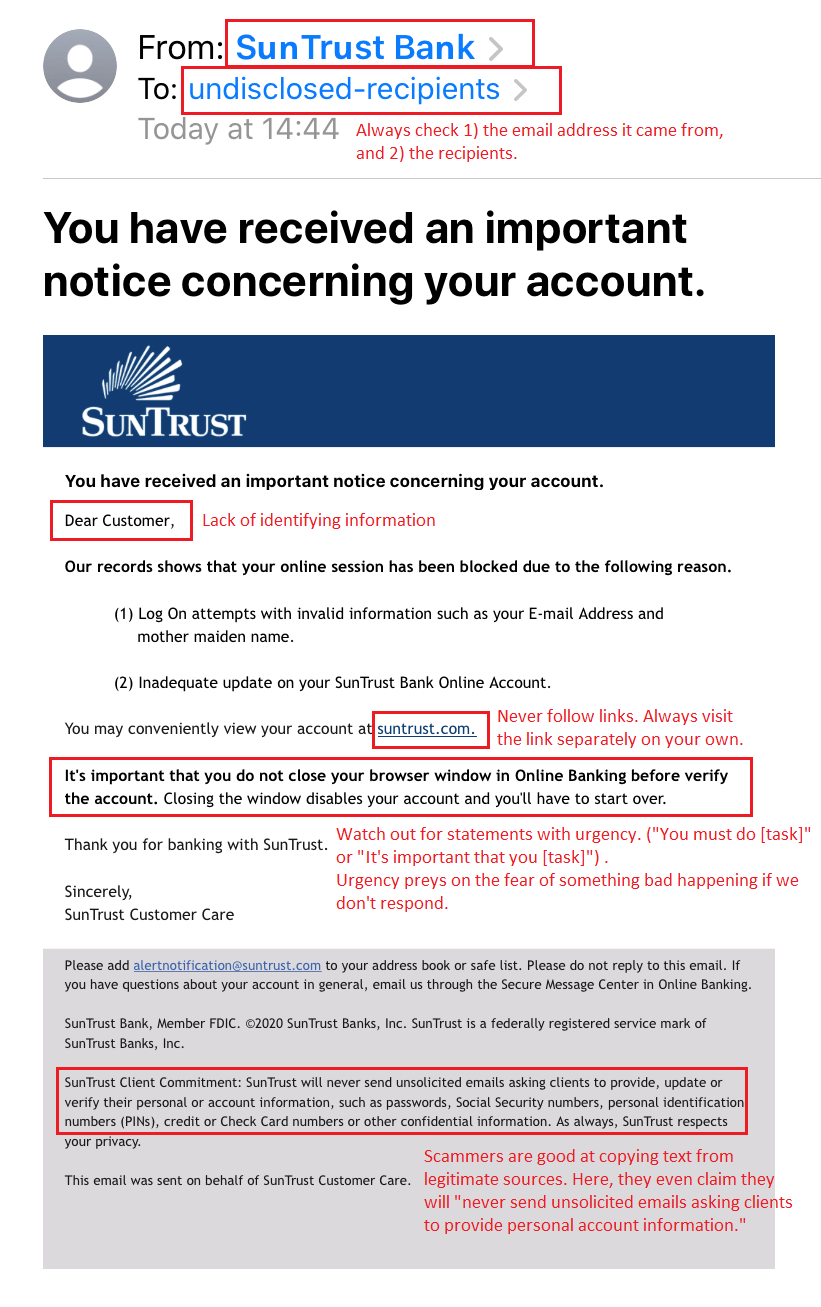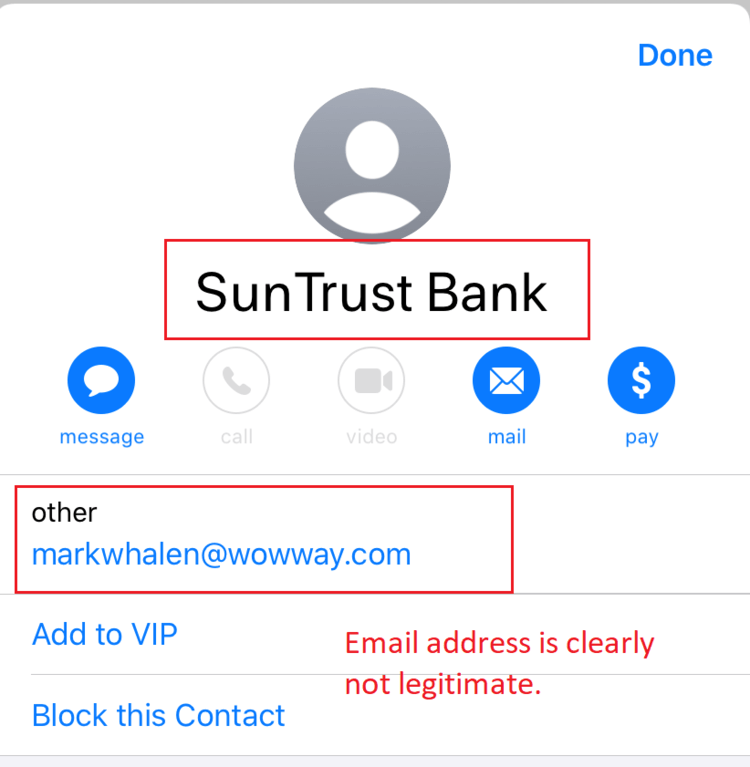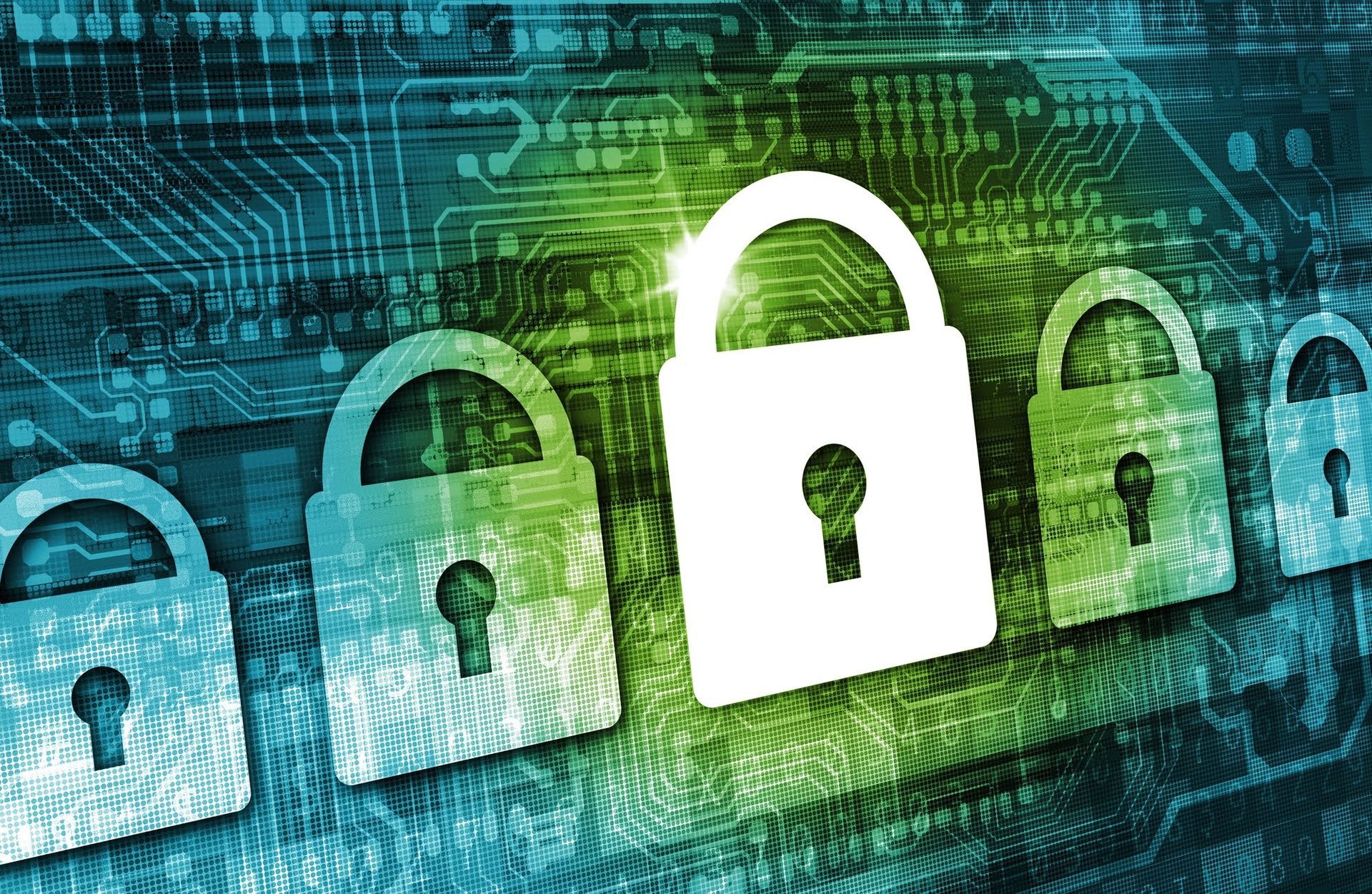PHISHING SCAMS: AN ALARMING THREAT

WHAT IS PHISHING?
Phishing scams are one of the easiest forms of cyber attacks for criminals to carry out. And an alarming number of businesses fall prey every year.
Most popularly, these scams use fake websites that convince the recipient to hand over personal financial information or passwords. Other attacks involve installing malware on a device after an illegitimate link is clicked.
THE COST OF PHISHING SCAMS:
- RiskIQ reports that
$17,700 is lost every minute because of phishing attacks.
- Phishing attacks cause 82% of reported security breaches, according to
CSO Online.
- According to a CNBC report, on average, a cyber attack costs $200,000. Of the small businesses who fall victim to an attack, 60% go out of business within six months.
HOW TO RECOGNIZE PHISHING?
Attached is a real-world example of a clever phishing email. Highlighted are clues that this email is illegitimate.


Education is the number one way to protect your business from a potentially catastrophic phishing scheme.
HERE’S WHAT YOU NEED TO KNOW:
- NEVER open a link directly from an email. If you need to check on a bank account, credit card, or any other personal information, go directly to the website. Clicking illegitimate links often take you to a website that appears correct, prompting you to enter personal password information.
- Watch out for a sense of urgency. Emails telling you to “act now or your account will be closed” use urgency as a scare tactic. This approach feeds on our fear of consequences if we don’t “act now.”
- Always check the URL and email address of the sender. In the example attached, the email address and URL of the sender claiming to be SunTrust bank is not a legitimate address.
- Do not open file attachments. Upon clicking, these attachments can install malware on your device.
- Protect your data holistically. Secure private cloud solutions like Reliance Desktop ensure that you never lose your data—even if you do become the victim of malware or a phishing attack.
Clever copywriting and imagery make phishing emails harder to identify. Training employees to follow these steps is critical to your security.
Photo by: Brett Jordan











